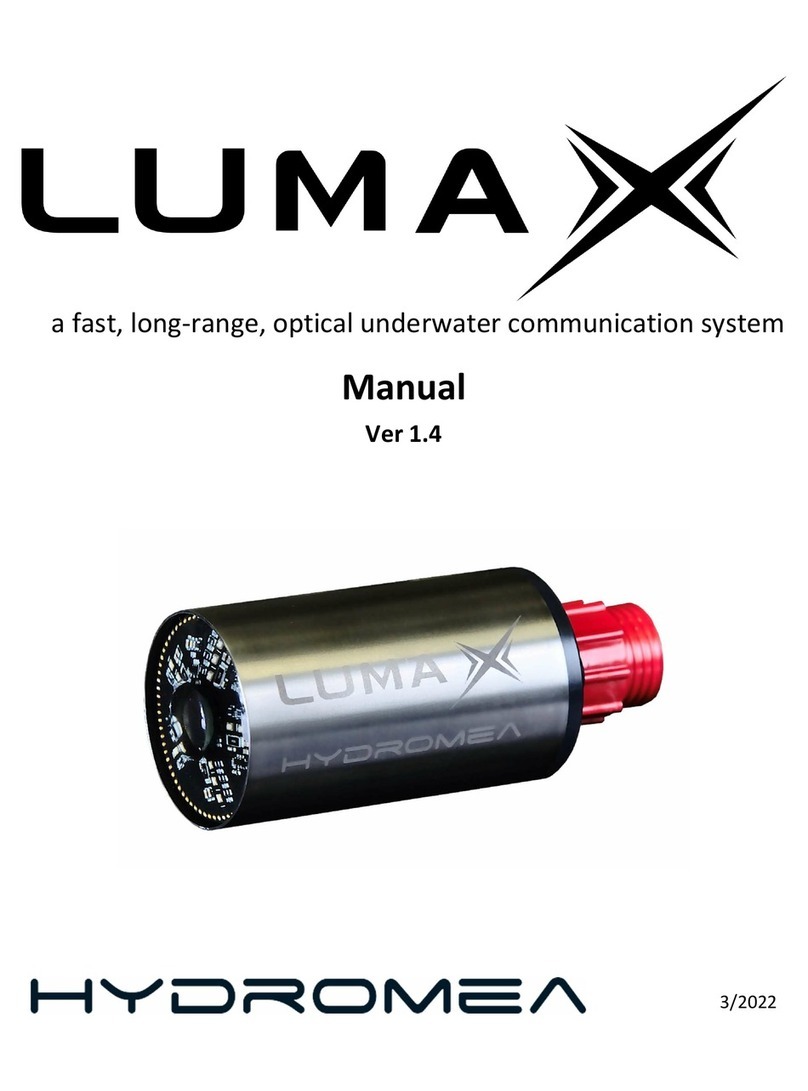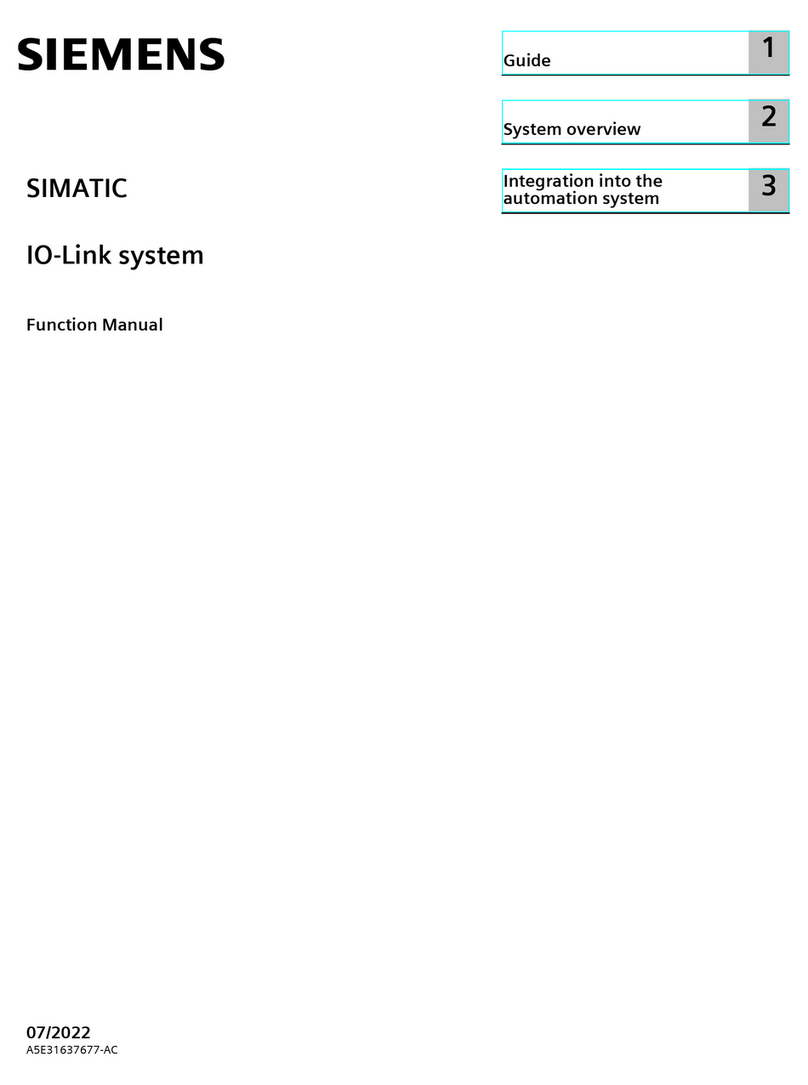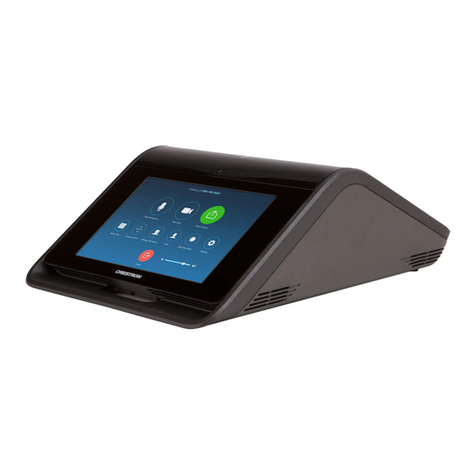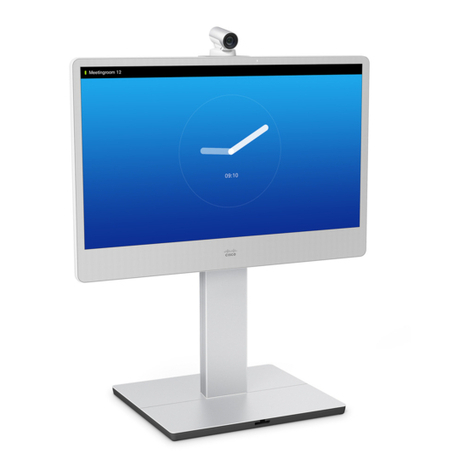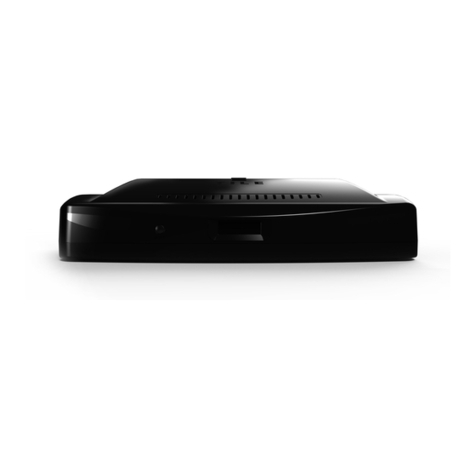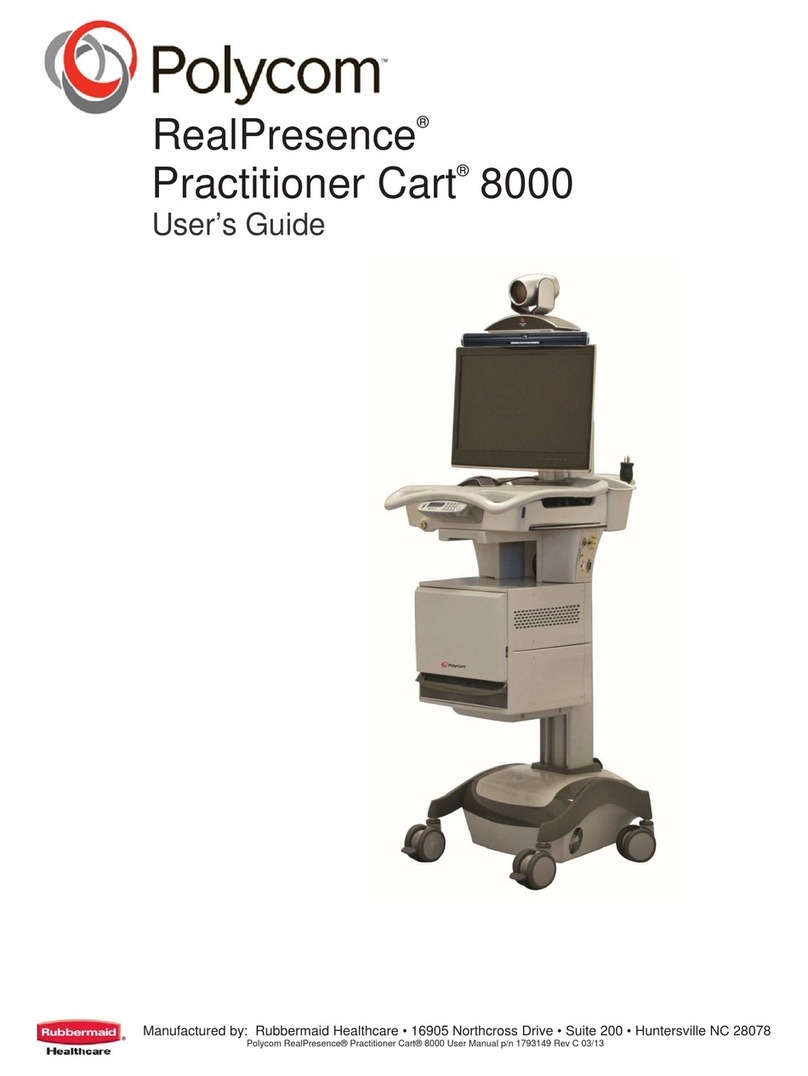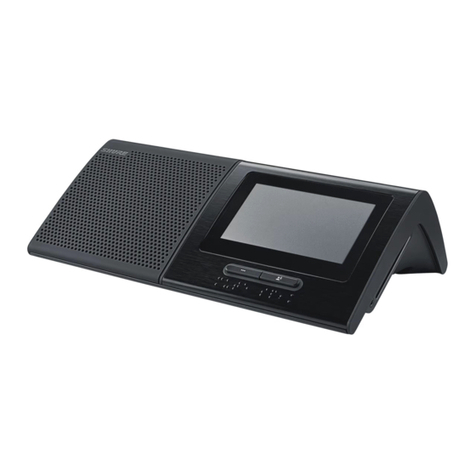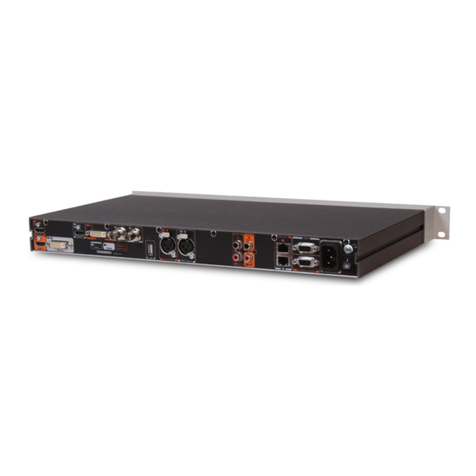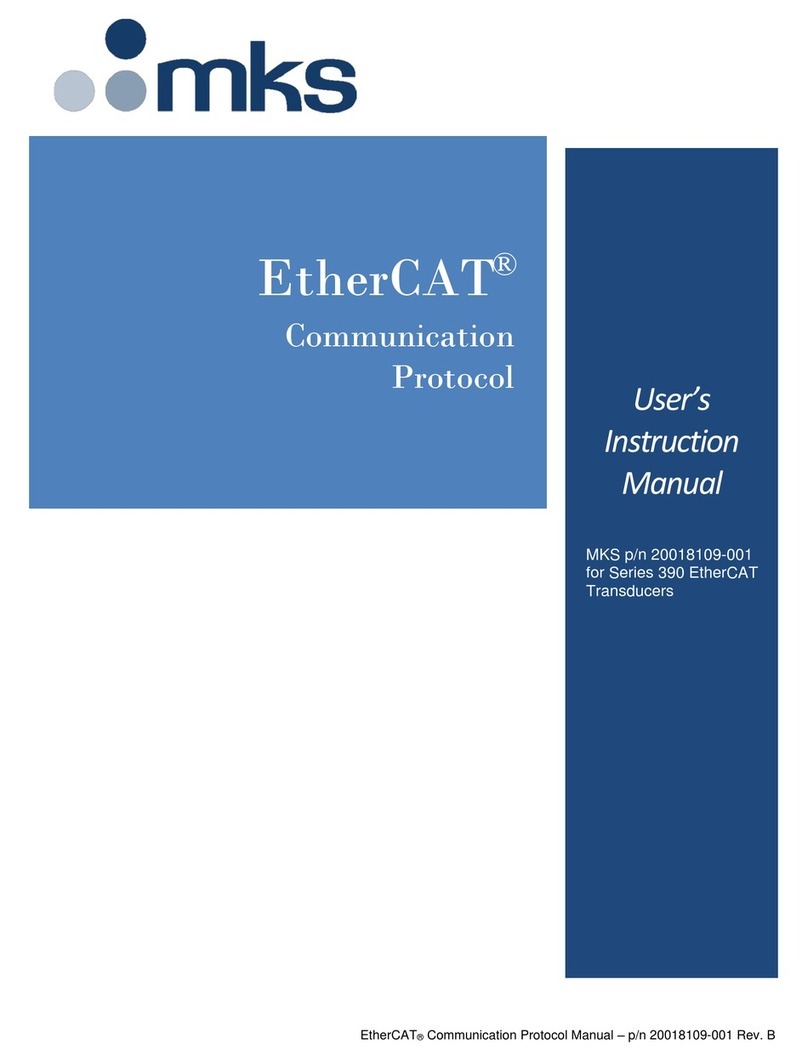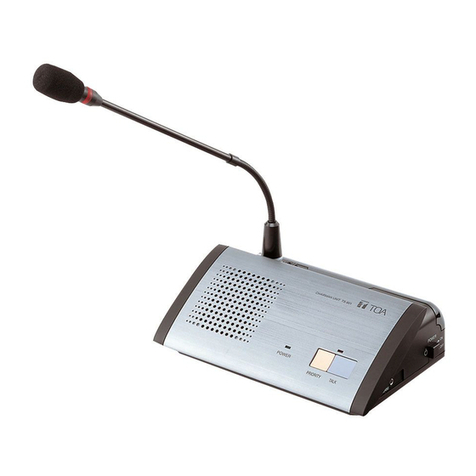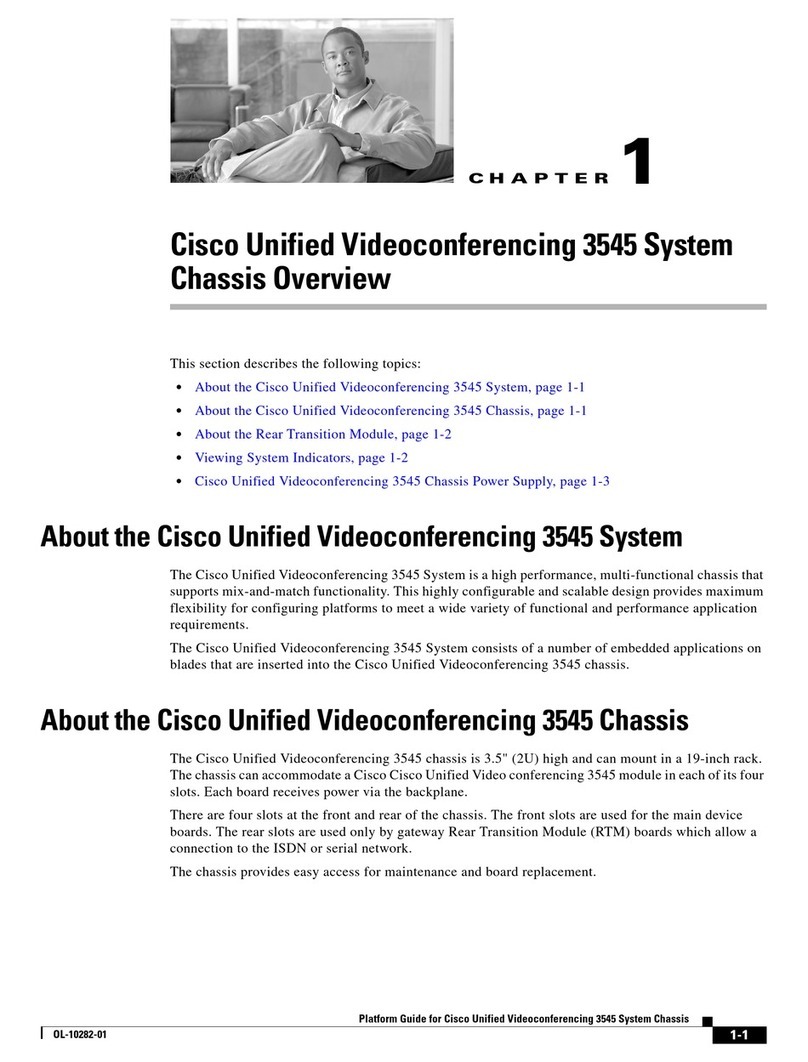Metro Audio Systems EC-135 Series User manual



METRO AVIATION, INC. FMS 135M-150
P.O. Box 7008
Shreveport, LA 71137
FAA Approved: 3/15/07 Revision E
3
SECTION I SYSTEM DESCRIPTION
The information contained herein supplements the information of the basic Flight Manual.
Forlimitations,procedures, andperformancedata notcontainedinthis supplement, referto
the basic Flight Manual.
1. General
This avionics system is designed to provide the pilot with redundant communication,
navigation, display, and automatic flight control systems (AFCS) for use in single-pilot IFR
operations.
1.1 Basic description
1.1.1 SYSTEM COMPONENTS
Component: Reference Manufacturer
Flight Control Display Sys FMS 9.2-53 (single) ECD
Or
Flight Control Display Sys FMS 9.2-49 (dual) ECD
Standby Attitude Indicator FMS 9.2-56 or equivalent ECD
Standby VOR/ILS Indicator FMS 135M-150 MAI
AFCS:
Three-axis Autopilot System FMS 9.2-48 ECD
Pitch, Roll and YAW SAS FMS 9.2-5 ECD
Pitch Damper FMS 9.2-5 ECD
Navigation and communication system:
Two Nav / Com radios including: FMS 135M-150 MAI
VHF Communication
VOR / Localizer Receiver
Glide Slope Receiver
GPS Receiver
Standby Navigation Receiver (optional) FMS 135M-150 MAI
Marker Beacon Receiver FMS 135M-150 MAI
DME FMS 135M-150 MAI
Radio Altimeter FMS 135M-150 MAI
Transponder with Mode S FMS 135M-150 MAI
Two Audio Systems FMS 135M-150 MAI
Altitude Alerting System (optional) FMS 135M-150 MAI
Miscellaneous Systems:
Two Inverters FMS 9.2-4 ECD
Two AHRS including magnetometers FMS 9.2-48 ECD
Two Air Data Computers (ADC) FMS 9.2-48 ECD
Second heated pitot system FMS 9.2-44 ECD
Search Light FMS 9.2-8 or equivalent ECD
Annunciators, controls, and switches FMS 135M-150 MAI
Spare headset and ICS Cord FMS 135M-150 MAI

METRO AVIATION, INC. FMS 135M-150
P.O. Box 7008
Shreveport, LA 71137
FAA Approved: 3/15/07 Revision E
4
1.2 Displays and controls
1.2.1 Reconfiguration Control Unit (RCU) and Instrument Control Panel (ICP)
LR
INACTIVE
1.2.2 Autopilot Mode Select (APMS) panel
1.2.3 Cyclic functions
SAS, P damper reset
SAS & AP cut-off
pitch & roll attitude and
upper mode function beep
force trim release
A
/P upper mode decouple
Spare
Transponder IDENT
Com #1 freq. transfer
TYPICAL CYCLIC CONTROL GRIP

METRO AVIATION, INC. FMS 135M-150
P.O. Box 7008
Shreveport, LA 71137
FAA Approved: 3/15/07 Revision E
5
1.2.4 Instrument panel
APMS
ICP #2
ICP #1
AUDIO #1 AUDIO #2
RCU
ENG CONTROL
ELEC CONTROL
CAD VEMD
XPNDR
NAV / COM #1
NAV / COM #2 ND
PFD
STBY
VOR / ILS
CLOCK STBY STBY STBY
A/S HORIZ ALT TRIPLE
TACH
WARNING PANEL
ALT ALERT
STBY NAV
12
PGS 1
PGS 2
M
K
R
N
C
B
RAD DIM
GPS DIM
DME HOLD
OBS
SINGLE-PILOT IFR INSTRUMENT PANEL TYPICAL CONFIGURATION

METRO AVIATION, INC. FMS 135M-150
P.O. Box 7008
Shreveport, LA 71137
FAA Approved: 3/15/07 Revision E
6
1.2.5 Instrument panel (Alternate Configuration)
SINGLE-PILOT IFR INSTRUMENT PANEL GNS-530 OPTION

METRO AVIATION, INC. FMS 135M-150
P.O. Box 7008
Shreveport, LA 71137
FAA Approved: 3/15/07 Revision E
7
1.3 Communication and Navigation
1.3.1 Combined navigation and communications system
The Garmin GNS-430/530 system consists of two fully integrated, panel mounted
nav/com radios. The system consists of a GPS antenna, GPS Receiver, GPS
navigation computer, VHF VOR/LOC/GS antenna, VOR/ILS/GS receiver, VHF
COMM antenna and a VHF communications transceiver.
Com#1 frequenciesmay betransferredbetween standbyandactive viaadedicated
switch on the pilot’s cyclic control grip (reference paragraph 1.2.3). Holding this
switch down for 2 seconds or more will place the emergency frequency 121.5 in the
active com 1 window.
NOTE: To go back to normal operation, after a “Com not Responding” message
occurs, the radio must be cycled off then on.
Provided the GPS receiver is receiving adequate usable signals, it has been
demonstrated capable of and has been shown to meet the accuracy specifications
for VFR/IFR enroute,terminal,and non-precisioninstrumentapproaches. Number 1
GNS-430/530VOR/ILS also drivestheGI-106 AstandbyVOR/ILS Indicatordirectly.
If the optional NR3320 VOR/ILS system is installed see 1.3.2 for GI-106A
description.
1.3.2 Standby VOR / ILS System (Optional)
StandbyVOR /ILS System consistsof a dedicatedNavigation Receiver(NR-3320)
which Navigation Indicator (GA-106A) powered on the Emergency Battery Bus for
VOR and LOC/ILS Navigation only.
1.4 Bus structure
1.4.1 Emergency Battery Bus
Thefollowing componentsare availablefollowingelectrical system failure andpower
is ensured for a minimum of 30 minutes:
•Standby Horizon
•Cockpit Floodlight
•Standby VOR / ILS System (Optional)
1.4.2 Essential buses
The following systems are available following dual generator system failure:
•Both Nav / Com radios
•Pitch and Roll SAS
•Yaw SAS
•Mode S transponder

METRO AVIATION, INC. FMS 135M-150
P.O. Box 7008
Shreveport, LA 71137
FAA Approved: 3/15/07 Revision E
8
1.4.3 Shed bus
The following systems are shed only following dual generator system failure:
•PFD & ND
•Autopilot (Note: Pitch and Roll SAS and Yaw SAS is available.)
1.4.4 IFR avionics bus
The following shows the general architecture of the avionics bus:
STBY HOR
STBY VOR / ILS
CKPT LTS
AHRS 1 AHRS 2
PITCH SAS
ROLL SAS BUS 1 BUS 2
PFD ND
ND PFD
BLW PEL
AHRS 2
ADC 2
AP 2
FCDM 2
DME
RAD ALT
FANNAV 2
COM 2
TXP
12
NAV 1
COM 1
AHRS 1
MKR
ALT ALERT
FDCM 1
DTS
AP 1
ADC 1
BLW PEL
ND PFD
AVIONICS
MASTER 1
II
NN
N
VV
O
R
M
INV SEL SW
AVIONICS ESS 1
EMER BUS 26 VAC BUS 1 26 VAC BUS 2 DISPLAY TST SW
SHED BUS 2
AVIONICS
MASTER 2
AVIONICS SHED 2AVIONICS ESS 2
ESS BUS 2
YAW SAS
MAST MM
PITCH DAMP
INST LT
A-COL LT
INV 2
INV 1
MSTR 2MSTR 1ESS B1 ESS B2
ESS BUS 1
WIPER
P / R SAS
TRIM REL
ROLL SEMA
YAW SEMA
AUD 1 AUD 2
XFR PUMP
HOR BAT
PIT HTR / ST HTR
LDG LT PWR
LDG LT CONT
POS LT
TRIM ACT (MTR)
SHED BUS 1
SHED BUS 1
AVIONICS SHED 1
SHED BUS 2
ANN LT
PAX LT
XFR PUMP
HI LOAD BUS 1
EMB 1
GEN 1
HL 1
SHED 1 BUS TIE 1 BUS
TIE 2
GEN 2 EPU
HL 2
SHED 2
EMB 2
BAT MSTR BOX
BAT
GEN 2
BATTERY
26 AH EPU
HI LOAD BUS 2
GEN 1

METRO AVIATION, INC. FMS 135M-150
P.O. Box 7008
Shreveport, LA 71137
FAA Approved: 3/15/07 Revision E
9
SECTION II
LIMITATIONS
2. LIMITATIONS
2.1 Approved operation
This helicopter is approved for single-pilot day and night VFR and IFR operation
when the Metro Aviation, Inc. SPIFR kit (135M-150) is installed.
2.2 Operational limitations
Dispatch for single pilot IFR operation is permissible only with AFCS engaged and
fully operational.
2.3 Compatibility with other optional equipment
The following kit is not compatible:
•External mirror (FMS 9.2-19)
2.4 Flight crew
The minimum flight crew consists of one pilot in the right crew seat.
2.5 Flight limitations
2.5.1 Forward speed
Min. Airspeed (V min IFR) 60kt
Never exceed speed (VNE IFR) V
NE
Best rate-of-climb speed (VyIFR)=Vy 65kt
2.5.2 Vertical speed
Maximum rate of descent 1500ft/min
2.5.3 Approach angle limitations
Maximum glide slope angle for approach 4.6o
2.5.4 Bank angle limitation
Maximum bank angle above 12,000 feet pressure altitude 20°
2.5.5 Altitude limitations
Maximum operating pressure altitude 15,000 Feet

METRO AVIATION, INC. FMS 135M-150
P.O. Box 7008
Shreveport, LA 71137
FAA Approved: 3/15/07 Revision E
10
2.5.6 Temperature limitations
Max OAT for aircraft operation is 45oC.
Ventilation must be set to maximum if OAT is greater than 30oC.
Max OAT for AFCS continuous operation with loss of ventilation is 30oC.
Max AFCS operating time with loss of ventilation is 30 min when OAT is between
30oC and 35oC.
Max operating time on ground is 20 minutes when OAT is greater than 42oC.
Max operating time on ground is 30 minutes when OAT is less than 42oC.
2.6 GPS limitations
APilot's Guide mustbeimmediately availabletothe flight crewwhenevernavigation
is predicated on the use of the system as follows:
GPS Model Manual P/N Rev. Level Date Effective
GARMIN GNS-430 190-00140-00 Rev. A Oct 1998 or later revision
GARMIN GNS-530 190-00181-00 Rev. B May 2001 or later revision
2.6.1 Software versions
The GNS-430/530 must utilize the following or later FAA approved software
versions:
Sub-System Software Version (GNS-430) Software Version (GNS-530)
Main 2.22 2.08
GPS 2.10 2.10
COMM 4.01 4.01
VOR/LOC 3.01 3.01
G/S 2.03 2.03
NOTE: The Main software version is displayed on the GNS-430/530 self test page
immediately after turn-on for 5 seconds. The remaining system software versions
can be verified on the AUX group sub-page 2, “SOFTWARE/DATABASE VER”.
2.6.2 GPS navigation limitations
2.6.2.1 Enroute
IFRenroute andterminal navigationpredicated uponthe GPS receiver isprohibited
unless the pilot verifies the currency of the data base or verifies each selected
waypoint for accuracy by reference to current approved data.

METRO AVIATION, INC. FMS 135M-150
P.O. Box 7008
Shreveport, LA 71137
FAA Approved: 3/15/07 Revision E
11
2.6.2.2 Approach
Instrument approach navigation predicated upon the GPS receiver must be
accomplished in accordance with approved instrument approach procedures that
are retrieved from the GPS equipment database. The GPS equipment database
must incorporate the current update cycle.
Instrument approaches utilizing the GPS receiver must be conducted in the
approach mode and Receiver Autonomous Integrity Monitoring (RAIM) must be
available at the Final Approach Fix.
Accomplishment of ILS, LOC, LOC-BC, LDA, SDF, MLS or any other type of
approach not approved for GPS overlay is not authorized.
Use of the VOR/ILS receiver to fly approaches not approved for GPS require
VOR/ILS navigation data to be present on the ND.
When an alternate airport is required, it must be served by an approach based on
other than GPS or Loran-C navigation, the aircraft must have the operational
equipment capable ofusing that navigation aid, and therequirednavigationaidmust
be operational.
VNAV information may be utilized for advisory information only. Use of VNAV
informationfor Instrument ApproachProcedures does notguaranteeStep-DownFix
altitude protection, or arrival at approach minimums in normal position to land.
2.6.3 GNS-430/530 Setup requirements
Ifnot previouslydefined, thefollowing defaultsettings mustbe madein the “SETUP
1” menu of the GNS-430/530 prior to operation(referto Pilot'sGuidefor procedure if
necessary):
dis, spd kt (sets navigation units to “nautical miles” and “knots”)
alt, vs ft fpm (sets altitude units to “feet” and “feet per minute”)
map datum WGS 84 (sets map datum to WGS-84, see note below)
posn deg-min (sets navigation grid units to decimal minutes)
NOTE In some areas outside the United States, datums other than WGS-84 or NAD-83
may be used. If the GNS-430/530 is authorized for use by the appropriate
Airworthiness authority, the required geodetic datum must be set in the GNS-
430/530 prior to its use for navigation.

METRO AVIATION, INC. FMS 135M-150
P.O. Box 7008
Shreveport, LA 71137
FAA Approved: 3/15/07 Revision E
12
2.7 PLACARDS AND DECALS
Placard:
Location:
Upper RH frame in full view of pilot
2.8 KIT CONFIGURATION AND ADDITIONAL REQUIREMENTS
Flight Control Display Sys FMS 9.2-53 (single) ECD
Or
Flight Control Display Sys FMS 9.2-49 (dual) ECD
Standby Attitude Indicator FMS 9.2-56 or equivalent ECD
Standby VOR/ILS Indicator GI-106A Garmin
AFCS:
Three-axis Autopilot System FMS 9.2-48 ECD
Pitch, Roll and YAW SAS FMS 9.2-5 ECD
Pitch Damper FMS 9.2-5 ECD
Navigation and comm system: FMS 135M-150 MAI
Two Nav / Com radios including:
VHF Communication GNS-430/530 (2) Garmin
VOR / Localizer Receiver GNS-430/530 (2) Garmin
Glide Slope Receiver GNS-430/530 (2) Garmin
GPS Receiver GNS-430/530 (2) Garmin
NOTE; Garmin GNS-430/530 must be “MOD 2 or higher”
Marker Beacon Receiver KR-21 Honeywell
DME DM-441B Honeywell
Radio Altimeter KRA-405 Honeywell
Transponder with Mode S KT-70 Honeywell
Two Audio Systems AA95-863 NorthernAirborne
Two Inverters FMS 9.2-4 ECD
Second heated pitot system FMS 9.2-44 ECD
Search Light FMS 9.2-8 or equivalent ECD
Spare headset and ICS Cord
THIS HELICOPTER IS
APPROVED FOR VFR DAY AND
NIGHT OPERATION, AND FOR
IFR OPERATION IN
ACCORDANCE WITH THE
APPROVED FLIGHT MANUAL.

METRO AVIATION, INC. FMS 135M-150
P.O. Box 7008
Shreveport, LA 71137
FAA Approved: 3/15/07 Revision E
13
SECTION III
EMERGENCY PROCEDURES
3. EMERGENCY AND MALFUNCTION PROCEDURES
3.1 General
The following condensed emergency procedures focus on electrical, AFCS, FCDS
malfunctions that may be encountered during single pilot IFR operations.
Detailed emergency procedures relating to AFCS and FCDS can be found in the
Flight Manual Supplements FMS 9.2-48 and FMS 9.2-53.
Emergency procedures relating to failures of basic aircraft systems are to be found
in the basic Flight Manual with the exception of those cases, which are listed here.
3.2 Urgency of landing
In IMC the normally used terms as described in section 3 of basic flight manual as
LAND AS SOON AS POSSIBLE defined as follows:
Try to reach VMC and continue in accordance with visual flight rules
If VFR is not possible, land at the nearest IFR airfield with a published
instrument approach.
The term “LAND AS SOON AS PRACTICABLE “ remains unchanged.
3.3 AFCS malfunction
A malfunction of the AFCS in IMC may increase the pilot’s workload. In this case an
airspeed lower than 120 knots for cruising flight and 100 knots for ILS approach is
recommended.
3.4 AFCS Warnings
WARNING CONDITION CORRECTIVE ACTION
AP
A. TRIM
with acoustic gong
Loss of complete
autotrim function Immediately fly hands on

METRO AVIATION, INC. FMS 135M-150
P.O. Box 7008
Shreveport, LA 71137
FAA Approved: 3/15/07 Revision E
14
3.5 CAD Cautions
CAUTION CONDITION CORRECTIVE ACTION
AUTOPILOT Failure or disengagement of
the autopilot - Fly aircraft hands-on
- Reengage AP if appropriate
- land as soon as practicable
TRIM Failure of autotrim - Fly aircraft hands-on
- land as soon as practicable
GYRO Failure of a sensor such as
AHRS or rate gyro - AHRS: see section 3.6
- Rate gyro: Monitor system
performance
ACTUATION Failure of a series actuator - Fly aircraft hands-on
- land as soon as practicable
P/R SAS Failure of the P/R SAS - Monitor system performance
DECOUPLE Decoupling of an upper mode
(Illuminated for 10 s) - Fly aircraft hands-on
- Verify proper upper mode
and reengage if appropriate
P DAMPER Failure of the pitch damper - Monitor system performance
YAW SAS Failure of the yaw SAS - Monitor system performance
GEN DISCON (SINGLE) Failure of a single generator
(One generator alone will
provide sufficient power for
normal conditions.)
- Gen reset then norm
- If caution remains, Gen off
- Reduce electrical consumers
as required
- land as soon as practicable
GEN DISCON (BOTH) Failure of both generators
(Autopilot, PFD and ND will be
inop, SAS remains operative)
A minimum of 30 minutes will
be available with the battery
initially at 80% capacity
- Each Gen reset then norm
- If cautions remains, Gens off
- Reduce electrical consumers
as required
- SHED BUS EMER ON if
necessary
- Check volts and amps
- Land as soon as possible
INVERTER Failure of an inverter - Inverter sw to remaining
inverter
HOR BAT 1. Standby horizon is
supplied by the emergency
battery as in a dual
generator failure (60
minute minimum
emergency power supply)
or
2. Emergency battery for the
standby horizon is
discharged
- Pull HOR BAT CB (cuts the
emergency battery from the
aircraft electrical system)
- For case 1, flag appears in
the standby horizon and
aircraft power to the standby
horizon is cut
- For case 2, no flag appears,
HOR BAT CB in, land as
soon as practicable
SHED EMER SHED Bus switch is in EMER
ON position - Reduce electrical consumers
as much as possible
- land as soon as possible

METRO AVIATION, INC. FMS 135M-150
P.O. Box 7008
Shreveport, LA 71137
FAA Approved: 3/15/07 Revision E
15
3.6 PFD/ND Warnings
WARNING CONDITION CORRECTIVE ACTION
CHECKCONF
MISMATCH
PINPROG
Major problem
with configuration
of system
System
must
be serviced
FCDM Loss of PFD and ND -FCDM sw on RCU from N
to remaining system
-land as soon as practicable
-cross check with back up
instruments
AHRS 1 OR 2 Loss of one AHRS -AHRS sw on RCU from N to
remaining system
-land as soon as practicable
AHRS 1 AND 2 Loss of both AHRS
No attitude, heading and
vertical speed data
-use standby instruments
-VOR course deviation is
available on composite
-land as soon as possible
ADC 1 OR 2 Failure of ADC computer - ADC sw on RCU from N to
remaining system
ICP 1 OR 2 Failure of ICP
The FCDS cannot be controlled
by failed ICP
- ICP sw on RCU from N to
remaining system
VOR OR ILS OR GPS Failure of NAV equipment - Check affected equipment
- Continue flight
GS AND/OR LOC Failure of localizer and
glideslope deviation
RA Failure of Radar Altimeter
WARNING DURING RECONFIGURATIONS, KEEP HAND ON CYCLIC STICK AND
MONITOR AIRCRAFT RESPONSE WHILE CAREFULLY RELEASING
CYCLIC STICK AFTER RECONFIGURATION AND REENGAGEMENT OF
AUTOTRIM IF NECESSARY.

METRO AVIATION, INC. FMS 135M-150
P.O. Box 7008
Shreveport, LA 71137
FAA Approved: 3/15/07 Revision E
16
3.7 PFD/ND Cautions
CAUTION CONDITION CORRECTIVE ACTION
CHECK FCDM Cross talk discrepancy
between FCDMs - Xcheck PFD and ND with
backup instruments
- FCDM sw on RCU from N
to correct working system
- Continue flight
CHECK PFD OR
CHECK ND Malfunction of respective
display - Press off button on
malfunctioning display
- Remaining display
automatically turn to
composite
- Continue flight
ALIGNMENT OR ALIGN AHRS is in alignment phase - Inflight maintain wings
level for at least 90
seconds
FAN Failure of the avionics cooling
ventilation
(If OAT is greater than 40°C
and the FCDM overheats it may
fail or automatically shutdown)
- Note OAT
- Land as soon as possible if
OAT is greater than 40°C
↔Sensor cross talk discrepancy
(attitude, airspeed, heading,
and altitude sensors)
- Xcheck PFD and ND with
backup instruments
- Respective sw on RCU
from N to correct working
system
WARNING DURING RECONFIGURATIONS, KEEP HAND ON CYCLIC STICK AND
MONITOR AIRCRAFT RESPONSE WHILE CAREFULLY RELEASING
CYCLIC STICK AFTER RECONFIGURATION AND REENGAGEMENT OF
AUTOTRIM IF NECESSARY.
3.8 TOTAL ELECTRICAL POWER LOSS
Conditions / Indications
No more electrical power provided.
Standby Artificial Horizon, Cockpit Floodlight, and Optional Standby VOR / ILS are
suppliedby theemergency powersupply(power supply isensuredfor a minimumof
60 minutes).
Procedure
LAND AS SOON AS POSSIBLE

METRO AVIATION, INC. FMS 135M-150
P.O. Box 7008
Shreveport, LA 71137
FAA Approved: 3/15/07 Revision E
17
3.9 Cyclic trim actuator failure/runaway
Conditions / Indications
Unsymmetrical cyclic stick forces
Procedure
TRIM REL switch on cyclic grip
- Press to eliminate forces
If, after releasing TRIM REL switch, cyclic stick forces reappear:
TRIM ACT circuit breaker - Pull
Airspeed - Reduce to the lesser of 120
KIAS or VNE
NOTE The TRIM REL switch remains functional for force trimming, but the manual beep
trim and automatic trim functions are disabled.
3.10 Loss of fuel information (failure of CAD lane)
Conditions / Indications
Because of failure of CAD lane, no fuel information will be provided.
Procedure
Note the last known fuel state indication and time.
Bleed air consumers - Switch off if possible
Electrical power consumers - Reduce as much as possible
Both fuel transfer pumps - Check on
Flight - Continue, using consumption
and time calculations
NOTE Establish visual contact with ground as soon as possible and divert to alternate
destination if closer.
3.11 Communication and/or ICS failures
Conditions / Indications
Loss of some or all transmit/receive functions and/or intercom functions
Procedures
NORM/EMERG switch - EMERG
If problem persists - Use spare headset and ICS cord
NOTE Holding the com #1 freq transfer switch on the pilot’s cyclic on for 2 seconds or
more will place the emergency frequency 121.5 in the active com 1 window.

METRO AVIATION, INC. FMS 135M-150
P.O. Box 7008
Shreveport, LA 71137
FAA Approved: 3/15/07 Revision E
18
3.12 Loss of PFD and ND
Conditions / Indications
Failed PFD or ND screen blank with a large white F displayed
Procedure
Refer to backup instruments
Press OFF buttons of the failed displays twice to attempt reset
NOTE SMD symbology should reappear within 30 seconds
NOTE Autopilot use should be limited to ALT hold, and IAS hold only if PFD and ND
displayscannot be recovered.Thecompletenavigationsituationmaybe monitored
via the integrated displays in the GNS 430 radios by selecting the appropriate
displays and use of the Standby VOR/ILS System.
3.13 GNS-430/530 abnormal operating procedures
3.13.1 Communications
Inan in-flightemergency, depressingand holding the #1Comtransfer button for
2 seconds will select the emergency frequency of 121.500 MHz into the "Active"
frequency window.
NOTE: In event of a loss of both GNS-430/530 units, holding the com #1 freq transfer
switch on the pilot’s cyclic on for 2 seconds or more will place 121.5 in the #1
Com for emergency communications.
3.13.2 Navigation
If navigation information is not available or invalid, utilize remaining operational
navigation equipment as required.
If "RAIM POSITION WARNING" message is displayed the system will flag and
no longer provide GPS based navigational guidance. The crew should revert to
the VOR/ILS receiver or an alternate means of navigation other than the GPS
receiver.
If "RAIM IS NOT AVAILABLE" message is displayed in the enroute, terminal, or
initial approach phase of flight, continue to navigate using the GPS or revert to
an alternate means of navigation. When continuing to use GPS navigation,
position must be verified every 15 minutes using VOR/ILS receiver or another
IFR-approved navigation system.

METRO AVIATION, INC. FMS 135M-150
P.O. Box 7008
Shreveport, LA 71137
FAA Approved: 3/15/07 Revision E
19
If "RAIM IS NOT AVAILABLE" message is displayedwhile onthe final approach
segment, GPS based navigation will continue for up to 5 minutes with approach
CDI sensitivity (0.3 nautical mile). After 5 minutes the system will flag and no
longer provide course guidance with approach sensitivity. Missed approach
course guidance may still be available with 1 nautical mile CDI sensitivity by
executing the missed approach.
In the event of a dual GNS-430/530 System failure that can’t be reset by cycling
power to units navigation is to be accomplished with the Standby VOR/ILS
System. If emergency communications is not available proceed using standard
loss of communications procedures.

METRO AVIATION, INC. FMS 135M-150
P.O. Box 7008
Shreveport, LA 71137
FAA Approved: 3/15/07 Revision E
20
SECTION IV
NORMAL PROCEDURES
4. NORMAL PROCEDURES
NOTE Before starting engines, make sure that the Master Avionics switches are off;
transient voltages that can occur during engine start may induce premature
failures.
4.1 System checks
4.1.1 STBY/HOR TEST:
STBY/HOR switch - TEST position 5 seconds
CAD - HOR BAT REMAINS on
(MISC)
STBY/HOR switch - ON, release cage button. Wait
3 minutes for correct indication
CAD - HOR BAT must go off
CAUTION THE FOLLOWING SYSTEM CHECKS SHOULD BE PERFORMED AFTER
STARTING ENGINES (ENGINES AT IDLE) AND HYDRAULIC CHECKS
PERFORMED.
4.1.2 AC power system
INV 1 and/or INV 2 switch - ON
INV SEL AC BUSS SPLY - NORM
Avionics Master Switches - ON
4.1.3 P&R SAS
- Push
- Check CAUTION indication:
P & R SAS
YAW SAS
SAS DCPL push-button
CAD
P DAMPER
SAS RST switch - P&R and yaw axes and
pitch damper reengage
Table of contents
Other Metro Audio Systems Conference System manuals

